Elizabeth Thompson (Lady Butler)
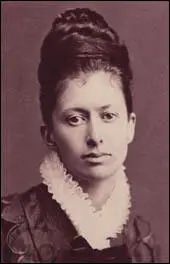
Elizabeth Thompson was born in Lausanne in 1846. Her sister, Alice Thompson, was born the following year. Both Elizabeth's parents were interested in art and at an early age she was encouraged to paint and draw. At first Elizabeth concentrated on painting portraits and landscapes but after visiting France, where she saw paintings inspired by the Franco-Prussian War, she began to paint military subjects.
In 1874 submitted a painting entitled the Roll Call to the Royal Academy in London. The selection committee were impressed and decided to include it in the Academy's yearly exhibition. The painting caused a sensation. Crowds flocked to the Academy to see the painting. The Spectator reported: "There is an inconvenient crowd in the same corner of the room that hangs Miss Elizabeth Thompson's Calling the Roll. On Monday, when we were there it was almost impossible to see it." It was so popular that it was decided to take the painting on a tour around the country. Wherever it went, large queues formed to see the picture.
There was also great competition to buy the Roll Call but when Queen Victoria made it clear that she wanted it, the other bidders agreed to withdraw their bids. However, Victoria did agree that an engraving should be made of the picture. Prints were made from the engraving and this allowed thousands of people all over Britain to have their own copy of the Roll Call hanging on their wall.
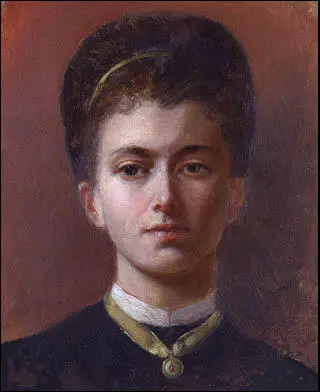
The main reason why Elizabeth's painting created such a sensation was that she had taken a completely new approach to military paintings. Up until this time military paintings had shown "panoramic views of battles or scenes of gallant officers performing heroic deeds". However, Elizabeth had painted a picture of a group of British soldiers after they had taken part in a battle during the Crimean War. Unlike previous military painters, Butler was interested in recording the pain and suffering of ordinary soldiers.
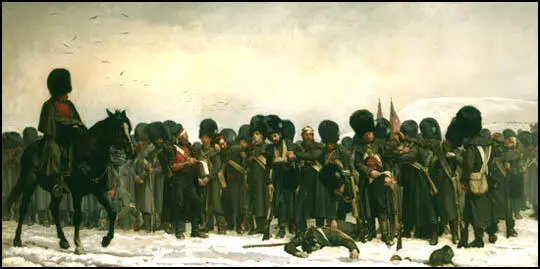
Roll Call also caused a sensation because it was painted by a woman. In the nineteenth century there were few women artists. Those that did paint, did not paint military subjects. Elizabeth Thompson helped to change peoples' attitudes towards women artists. John Ruskin, Britain's leading art critic at the time wrote: "I have always said that no women could paint." After seeing Roll Call Ruskin admitted he had been wrong.
By 1875 Thompson was the most popular and well-known painter in Britain. For the next five years large sums of money were paid for her military paintings. Elizabeth always took great care to make sure details of her picture was correct. Soldiers who had taken part in the battle would visit her studio in Portsmouth. These men would pose for her wearing the uniforms and carrying the weapons that they had used during the battle.
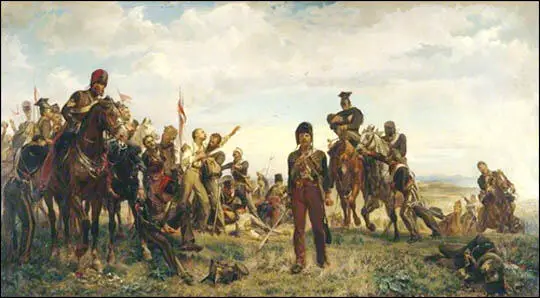
In 1877, Elizabeth married Major William Butler. Her husband came from a poor Roman Catholic family from Ireland. William had strong opinions about the way the Catholics had been treated in Ireland. His views had an influence on Elizabeth. For example, while living in Ireland, Elizabeth Thompson heard of a Catholic woman who was about to be evicted from her home. Elizabeth hurried to the scene and arrived to find the women's cabin had been destroyed by the landlord. While the women searched the ruins for her belongings, Elizabeth set up her easel and began to paint the scene. For historical reasons the British public had little sympathy for the plight of the Catholics in Ireland. Elizabeth's painting Evicted was unpopular in Britain and failed to find a buyer.
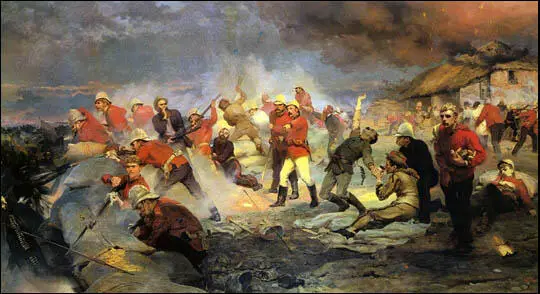
The public were also beginning to turn against Elizabeth's military paintings. During the first Boer War (1880-81) people in Britain became very patriotic. They now wanted pictures that glorified British victories. Some people began to complain that Elizabeth's paintings undermined the morale of the British soldiers. Paintings that emphasised the pain and suffering of soldiers were unlikely to encourage men to join the British army. After 1881 Elizabeth found it very difficult to sell her paintings. Although Elizabeth Thompson continued to paint military pictures until her death in 1933, she was never again to achieve the popularity that she enjoyed in the early part of her career.
Primary Sources
(1) The Spectator (9th May 1874)
There is an inconvenient crowd in the same corner of the room that hangs Miss Elizabeth Thompson's Calling the Roll. On Monday, when we were there it was almost impossible to see it.
(2) Elizabeth Thompson described the painting of The Defence of Rorke's Drift in 1879.
I reproduced the event (the Battle of Rorke's Drift) from the private's point of view - not mine, as the witnesses were from the ranks.
(3) Elizabeth Thompson wrote about her military paintings in her autobiography published in 1922.
I never painted for the glory of war, but to portray its pathos and heroism.

